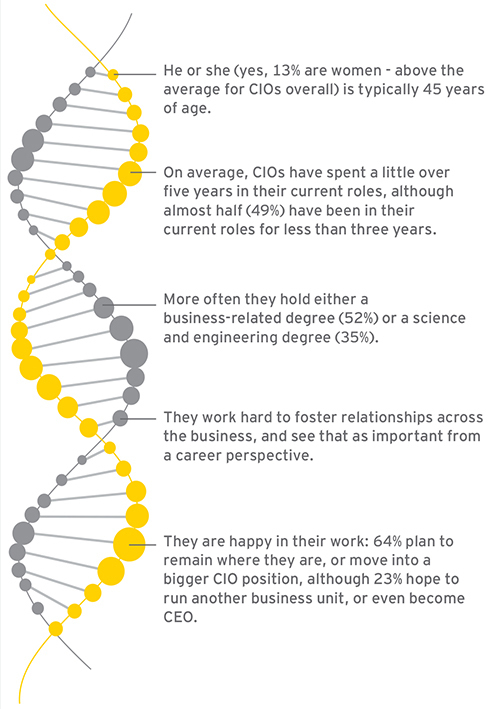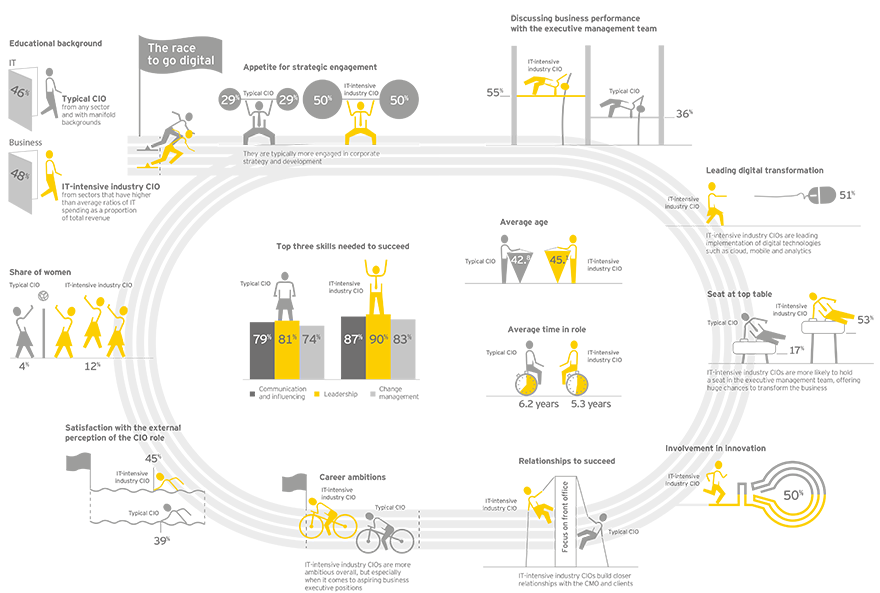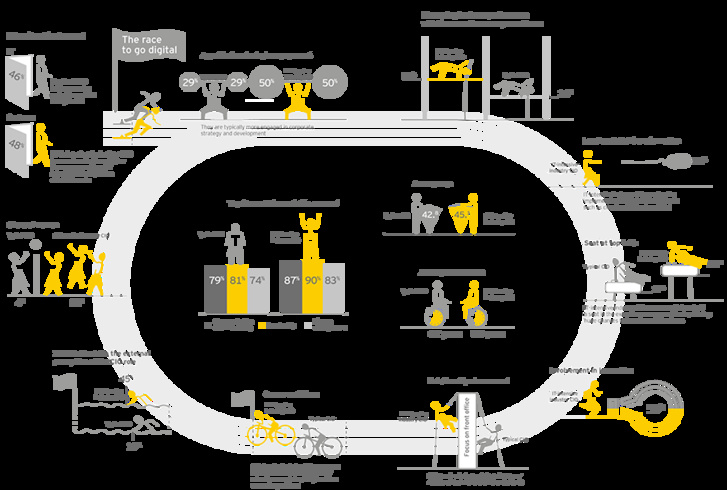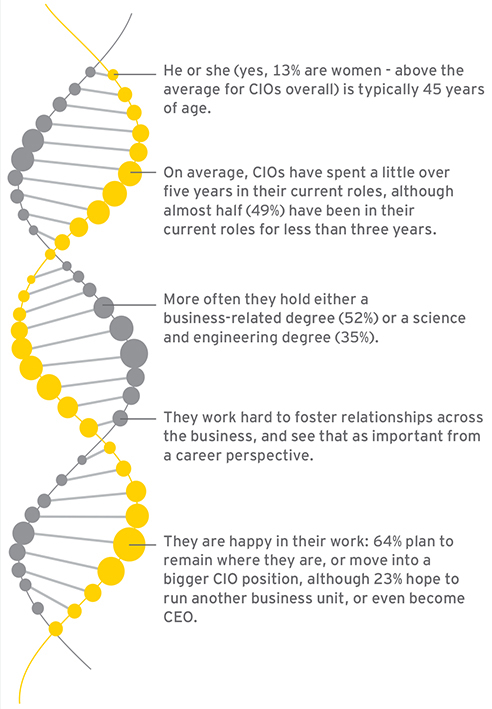A core set of digital technologies - mobile, social, the cloud and data - are transforming companies at both an operational and a strategic level. For leading CIOs, these present a major opportunity to expand their role.
A digital world
Across a range of industries and geographies, digital technologies are transforming the way companies and their customers interact. At the same time, these technologies are releasing a wave of IT-led innovation, and creating new revenue and cost-saving opportunities.
This seems like a natural process within internet companies, which are born digital, but the digital transformation is now spreading rapidly to enable organizations of all shapes and sizes to reinvent themselves.
Dealing with the challenge of digital change requires an end-to-end response, building a comprehensive digital strategy, and rethinking the business and operating models.
There are three core changes:
- Using digital to enhance traditional business models, such as moving from selling products to providing services
- Transforming existing business models to offer new digital services
- Inventing wholly new types of business models
Opportunities ahead for CIOs in IT-intensive sectors
For aspirational CIOs, the digital transformation now underway presents a huge opportunity. Previous research revealed that about two-thirds of all CIOs are happy in their role, but that a significant proportion (31%) wants to move into a bigger role, with a broader remit and greater influence over the rest of the business.
The opportunity is especially apparent in a core set of sectors – including technology companies, banks and life sciences firms – that have a higher than average ratios of IT spending as a proportion of total revenue.
How IT-intensive industry CIOs stand out
1. More often a member of the executive management team
More than half hold a seat at the executive table. “For years, CIOs have been fighting for a seat at the table. They’ve understood the importance of building relationships, and how to engage the business with a business-centric vocabulary, and so on. So many now have a seat at the boardroom table, but they don’t know what to do with it,” argues KornFerry’s Bob Concannon.
2. Typically more engaged on strategic issues
One of the clearest differences that mark out IT-intensive industry CIOs is their far stronger focus on business performance, with 55% interacting with the board on this topic on a regular basis. Take Fred Swanepoel, the CIO of South African Nedbank, who is providing advice to the board on the strategic direction of the business and leveraging technology to achieve strategic objectives on at least a quarterly basis.
3. More aware of the skills needed to succeed
IT-intensive industry CIOs acknowledge greater need for softer skills such as leadership, change management, and influencing and communication. For example, 9 in 10 see leadership as strongly needed to perform best in their role – a skills area where digital is creating new demands. This broader palette of interests is also reflected in the more business oriented education.
The DNA of the digital-ready CIO
An IT-intensive company can provide the ideal context for CIOs to embrace digital. But to actually do so requires the individual to find the motivation and drive to lead this charge. CIOs most engaged on corporate development show striking differences in how they approach their job.
Out of the IT-intensive industry CIOs surveyed, nearly one in four was making a far stronger push on the most strategic elements of the job such as delivering transformation and bringing business model innovation. These leading CIOs show an ability to reframe their thinking and present a positive story to the rest of the business about how technology can deliver a very different future.
They also appear to materially benefit from this: seven in ten of these CIOs strongly agree that their standing within the business has materially improved over the past three years.
In fact, across a broad sweep of areas, these CIOs stood out as natural leaders. We’ve called them the digital-ready CIOs.
Across a range of industries and geographies, digital technologies are transforming the way companies and their customers interact. At the same time, these technologies are releasing a wave of IT-led innovation, and creating new revenue and cost-saving opportunities.
This seems like a natural process within internet companies, which are born digital, but the digital transformation is now spreading rapidly to enable organizations of all shapes and sizes to reinvent themselves.
Dealing with the challenge of digital change requires an end-to-end response, building a comprehensive digital strategy, and rethinking the business and operating models.
There are three core changes:
- Using digital to enhance traditional business models, such as moving from selling products to providing services
- Transforming existing business models to offer new digital services
- Inventing wholly new types of business models
Opportunities ahead for CIOs in IT-intensive sectors
For aspirational CIOs, the digital transformation now underway presents a huge opportunity. Previous research revealed that about two-thirds of all CIOs are happy in their role, but that a significant proportion (31%) wants to move into a bigger role, with a broader remit and greater influence over the rest of the business.
The opportunity is especially apparent in a core set of sectors – including technology companies, banks and life sciences firms – that have a higher than average ratios of IT spending as a proportion of total revenue.
How IT-intensive industry CIOs stand out
1. More often a member of the executive management team
More than half hold a seat at the executive table. “For years, CIOs have been fighting for a seat at the table. They’ve understood the importance of building relationships, and how to engage the business with a business-centric vocabulary, and so on. So many now have a seat at the boardroom table, but they don’t know what to do with it,” argues KornFerry’s Bob Concannon.
2. Typically more engaged on strategic issues
One of the clearest differences that mark out IT-intensive industry CIOs is their far stronger focus on business performance, with 55% interacting with the board on this topic on a regular basis. Take Fred Swanepoel, the CIO of South African Nedbank, who is providing advice to the board on the strategic direction of the business and leveraging technology to achieve strategic objectives on at least a quarterly basis.
3. More aware of the skills needed to succeed
IT-intensive industry CIOs acknowledge greater need for softer skills such as leadership, change management, and influencing and communication. For example, 9 in 10 see leadership as strongly needed to perform best in their role – a skills area where digital is creating new demands. This broader palette of interests is also reflected in the more business oriented education.
The DNA of the digital-ready CIO
An IT-intensive company can provide the ideal context for CIOs to embrace digital. But to actually do so requires the individual to find the motivation and drive to lead this charge. CIOs most engaged on corporate development show striking differences in how they approach their job.
Out of the IT-intensive industry CIOs surveyed, nearly one in four was making a far stronger push on the most strategic elements of the job such as delivering transformation and bringing business model innovation. These leading CIOs show an ability to reframe their thinking and present a positive story to the rest of the business about how technology can deliver a very different future.
They also appear to materially benefit from this: seven in ten of these CIOs strongly agree that their standing within the business has materially improved over the past three years.
In fact, across a broad sweep of areas, these CIOs stood out as natural leaders. We’ve called them the digital-ready CIOs.

The core characteristics of a digital-ready CIO
There are six points mark out the digital-ready CIOs as role models for any other CIOs seeking to stand out from the crowd and fulfill their career aspirations. This is certainly true for those CIOs getting engaged in a digital transformation, but it’s just as applicable more generally for any CIOs simply wanting to gain a stronger voice in their organization.
Six distinctive traits of digital-ready CIOs:
1. Digital-ready CIOs have a strategic vision for how technology will transform the business
2. Digital-ready CIOs innovate relentlessly
3. Digital-ready CIOs focus closely on driving growth
4. Digital-ready CIOs ensure their vision is understood
5. Digital-ready CIOs move beyond operations and infrastructure
6. Digital-ready CIOs are courageous risk-takers
Routes to the top
Based-upon a multidisciplinary approach in their careers digital-ready CIOs show high levels of satisfaction in their status, career prospects and ability to influence the corporate strategy.
High job satisfaction
Digital-ready CIOs appreciate the opportunity they hold: 63% are either content to stay in their current position, or are simply seeking out a bigger CIO role.
Across all elements of their job, they express greater satisfaction with their work than their IT-intensive industry peers do.
This is especially striking in three areas:
- Their ability to influence corporate strategy
- The potential for future career development
- Their status
Career lessons from digital-ready CIOs
1. Digital-ready CIOs are far more open to taking advice and trying out new ideas
2. They are strongly interested in developing skills outside core IT areas
3. Digital-ready CIOs are willing to leave their home turf
Preparing for a digital business
Successfully dealing with the digital revolution requires a far stronger focus on the strategic elements of the role as opposed to the basic execution chores.
From our interviews with CIOs and IT leaders, we gathered advice and guidance on how to prepare for a digital world—and to stand out from your peers both at strategic and at personal level.
At a strategic level:
- Give a detailed vision for how technology can transform the business—and a plan to implement the transformation
- Prioritize innovation wherever possible, at both a process and a business model level
- Don’t let operational IT overwhelm you
At a personal level:
- Build close relationships with the front of the business
- Be a compelling storyteller: the best CIOs are able to provide a narrative about IT that the rest of the business can buy into
- Be willing to take risks and have courage
- Be willing to move around, across both functions and companies
- Consider other ways to develop a more wide-ranging background to showcase your skills in another light and broaden your development
At a technical level:
- Set up the right architectures for growth
- Get control of your data
- Set out the relevant standards
- Understand strategic alignment with the rest of the business
- Take a fast, multidisciplinary approach to managing new projects
- Plan the sequencing and pace of change
METHODOLOGY
The research draws on a survey of 166 (information) technology leaders from a range of IT-intensive industries, as these are the firms where CIOs are likely to have the greatest scope and widest remit in their roles.
The global survey, which spanned key markets across Europe, the Americas, Asia, the Middle East and Africa, focused primarily on large fi rms: 27% had annual revenues of between US$500m and US$1b, and the rest were larger, including 20% with revenues of at least US$10b.
We also conducted detailed interviews with a range of CIOs and IT experts, to add additional context to our data and findings.
We focused on those sectors independently identifi ed as being the most IT-intensive, in terms of annual spending on IT as a percentage of revenue. These sectors included technology (including hardware, software and other IT services), financial services, life sciences, telecommunications, online and e-commerce.
In addition to this survey, EY conducted an analysis of the career paths, education and background of over 100 leading CIOs, representing the top 25 largest companies — determined by revenue or assets — in four IT-intensive sectors: IT, telecommunications, life sciences and banking.
Download below “Born to be digital: how leading CIOs are preparing for a digital transformation” (PDF 44 pages)
There are six points mark out the digital-ready CIOs as role models for any other CIOs seeking to stand out from the crowd and fulfill their career aspirations. This is certainly true for those CIOs getting engaged in a digital transformation, but it’s just as applicable more generally for any CIOs simply wanting to gain a stronger voice in their organization.
Six distinctive traits of digital-ready CIOs:
1. Digital-ready CIOs have a strategic vision for how technology will transform the business
2. Digital-ready CIOs innovate relentlessly
3. Digital-ready CIOs focus closely on driving growth
4. Digital-ready CIOs ensure their vision is understood
5. Digital-ready CIOs move beyond operations and infrastructure
6. Digital-ready CIOs are courageous risk-takers
Routes to the top
Based-upon a multidisciplinary approach in their careers digital-ready CIOs show high levels of satisfaction in their status, career prospects and ability to influence the corporate strategy.
High job satisfaction
Digital-ready CIOs appreciate the opportunity they hold: 63% are either content to stay in their current position, or are simply seeking out a bigger CIO role.
Across all elements of their job, they express greater satisfaction with their work than their IT-intensive industry peers do.
This is especially striking in three areas:
- Their ability to influence corporate strategy
- The potential for future career development
- Their status
Career lessons from digital-ready CIOs
1. Digital-ready CIOs are far more open to taking advice and trying out new ideas
2. They are strongly interested in developing skills outside core IT areas
3. Digital-ready CIOs are willing to leave their home turf
Preparing for a digital business
Successfully dealing with the digital revolution requires a far stronger focus on the strategic elements of the role as opposed to the basic execution chores.
From our interviews with CIOs and IT leaders, we gathered advice and guidance on how to prepare for a digital world—and to stand out from your peers both at strategic and at personal level.
At a strategic level:
- Give a detailed vision for how technology can transform the business—and a plan to implement the transformation
- Prioritize innovation wherever possible, at both a process and a business model level
- Don’t let operational IT overwhelm you
At a personal level:
- Build close relationships with the front of the business
- Be a compelling storyteller: the best CIOs are able to provide a narrative about IT that the rest of the business can buy into
- Be willing to take risks and have courage
- Be willing to move around, across both functions and companies
- Consider other ways to develop a more wide-ranging background to showcase your skills in another light and broaden your development
At a technical level:
- Set up the right architectures for growth
- Get control of your data
- Set out the relevant standards
- Understand strategic alignment with the rest of the business
- Take a fast, multidisciplinary approach to managing new projects
- Plan the sequencing and pace of change
METHODOLOGY
The research draws on a survey of 166 (information) technology leaders from a range of IT-intensive industries, as these are the firms where CIOs are likely to have the greatest scope and widest remit in their roles.
The global survey, which spanned key markets across Europe, the Americas, Asia, the Middle East and Africa, focused primarily on large fi rms: 27% had annual revenues of between US$500m and US$1b, and the rest were larger, including 20% with revenues of at least US$10b.
We also conducted detailed interviews with a range of CIOs and IT experts, to add additional context to our data and findings.
We focused on those sectors independently identifi ed as being the most IT-intensive, in terms of annual spending on IT as a percentage of revenue. These sectors included technology (including hardware, software and other IT services), financial services, life sciences, telecommunications, online and e-commerce.
In addition to this survey, EY conducted an analysis of the career paths, education and background of over 100 leading CIOs, representing the top 25 largest companies — determined by revenue or assets — in four IT-intensive sectors: IT, telecommunications, life sciences and banking.
Download below “Born to be digital: how leading CIOs are preparing for a digital transformation” (PDF 44 pages)
Autres articles
-
Pomelo annonce une Série A à 35 millions de dollars menée par Vy Capital
-
Hong Kong : bientôt des premiers ETF Bitcoin ?
-
TMS Network (TMSN) Powers Up As Cryptocurrency Domain Appears Unstoppable. What Does This Mean For Dogecoin (DOGE) and Solana (SOL)?
-
The Growing Popularity of Crypto Payments: Could TMS Network (TMSN), Alchemy Pay (ACH), and Ripple (XRP) Lead The Way Despite The Whales?
-
DigiFT DEX Raises $10.5M in Pre-Series A Funding Led by Shanda Group



















